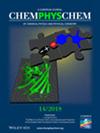Bimetallic Titanium-Manganese on Nitrogen- and Boron-Doped Graphene Structures Catalyze Nitrogen Reduction for Ammonia Synthesis.
IF 2.2
3区 化学
Q3 CHEMISTRY, PHYSICAL
引用次数: 0
Abstract
In this article, considering the different dispersion and aggregation degrees of Ti, Mn on the surface of N and B-doped graphene, Ti-Mn@N4B2-C and Ti2-Mn4@N4B2-C structures are constructed, for nitrogen reduction reaction (NRR) calculation. Considering the complexity of the catalytic reaction process, all possible reaction paths are explored to obtain the free energy changes in Ti-Mn@N4B2-C and Ti2-Mn4@N4B2-C structures. The final results showed that Ti-Mn@N4B2-C and Ti2-Mn4@N4B2-C have good NRR activity, and both of them can be spontaneous at room temperature (limiting potential of 0 eV vs. 0.16 eV).
氮和硼掺杂石墨烯结构上的双金属钛锰催化氨合成中的氮还原。
本文考虑到Ti、Mn在N掺杂和b掺杂石墨烯表面的分散和聚集程度不同,构建了Ti-Mn@N4B2-C和Ti2-Mn4@N4B2-C结构,用于氮还原反应(NRR)的计算。考虑到催化反应过程的复杂性,探索了所有可能的反应路径,得到了Ti-Mn@N4B2-C和Ti2-Mn4@N4B2-C结构的自由能变化。最终结果表明,Ti-Mn@N4B2-C和Ti2-Mn4@N4B2-C具有良好的NRR活性,且在室温下均能自发(极限电位为0 eV vs. 0.16 eV)。
本文章由计算机程序翻译,如有差异,请以英文原文为准。
求助全文
约1分钟内获得全文
求助全文
来源期刊

Chemphyschem
化学-物理:原子、分子和化学物理
CiteScore
4.60
自引率
3.40%
发文量
425
审稿时长
1.1 months
期刊介绍:
ChemPhysChem is one of the leading chemistry/physics interdisciplinary journals (ISI Impact Factor 2018: 3.077) for physical chemistry and chemical physics. It is published on behalf of Chemistry Europe, an association of 16 European chemical societies.
ChemPhysChem is an international source for important primary and critical secondary information across the whole field of physical chemistry and chemical physics. It integrates this wide and flourishing field ranging from Solid State and Soft-Matter Research, Electro- and Photochemistry, Femtochemistry and Nanotechnology, Complex Systems, Single-Molecule Research, Clusters and Colloids, Catalysis and Surface Science, Biophysics and Physical Biochemistry, Atmospheric and Environmental Chemistry, and many more topics. ChemPhysChem is peer-reviewed.
 求助内容:
求助内容: 应助结果提醒方式:
应助结果提醒方式:


